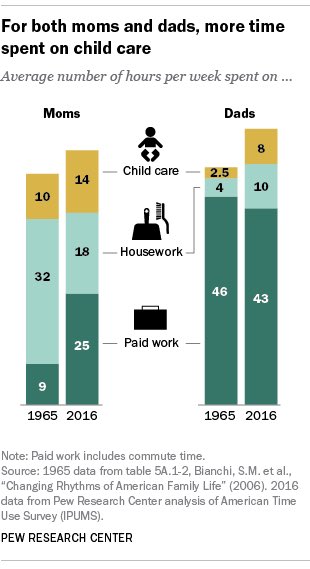
@TheMightyV24 @JonesApathy @FoaChris @DianaWintah You have made this argument before (archive.ph/Ggii9), but, @TheMightyV24, you still haven't explained why was it necessary for the study you cited then to excise 5/6s of the data regarding men to show that women "receive much longer sentences than men."
@TheMightyV24 @JonesApathy @FoaChris @DianaWintah "Gender Differences in the Sentencing of Felony Offenders" cited by @TheMightyV24 showed that if numbers are manipulated enough (by taking a random sample of a sixth of the male convicts and compare it with all of the female convicts), women could be shown getting treated worse.
@TheMightyV24 @JonesApathy @FoaChris @DianaWintah Consider, instead, Sonja B. Starr's "Estimating Gender Disparities in Federal Criminal Cases," University of Michigan Law and Economics Research Paper, No. 12-018 (August 29, 2012) (available at papers.ssrn.com/sol3/papers.cf…) showing that women get shorter sentences (when prosecuted). 

@TheMightyV24 @JonesApathy @FoaChris @DianaWintah "This study finds dramatic unexplained gender gaps in federal criminal cases. Conditional on arrest offense, criminal history, and other pre-charge observables, men receive 63% longer sentences on average than women do." Research Paper 12-018, p. 17.
@TheMightyV24 @JonesApathy @FoaChris @DianaWintah "Prosecutors and/or judges seem to use their discretion to accommodate family circumstances in sub rosa ways—but not for male defendants." Research Paper 12-018, pp. 14–15.
@TheMightyV24 @JonesApathy @FoaChris @DianaWintah "However, if family hardship is a legitimate consideration, one might expect it to play at least some role in men’s cases as well [but it does not in the sense of reducing sentences as it does for women]." Research Paper 12-018, p. 15.
@TheMightyV24 @JonesApathy @FoaChris @DianaWintah "Numerous studies have suggested that paternal incarceration harms children even when the father was already a noncustodial parent…." Research Paper 12-018, p. 15.
@TheMightyV24 @JonesApathy @FoaChris @DianaWintah Nevertheless, "[w]omen are … significantly likelier to avoid charges and convictions, and twice as likely to avoid incarceration if convicted. " Research Paper 12-018, p. 17.
@TheMightyV24 @JonesApathy @FoaChris @DianaWintah "Policymakers might simply be untroubled by [judicial] leniency toward women." Research Paper 12-018, p. 17.
@TheMightyV24 @JonesApathy @FoaChris @DianaWintah The data from the state courts (bjs.gov/content/pub/pd…) shows a slight sentencing discrepancy between white and black defendants that is completely dwarfed by how much leniency women get (which is comparable to Law Professor Sonja B. Starr's federal data referenced hereinabove). 



@TheMightyV24 @JonesApathy @FoaChris @DianaWintah Consider also "Gender and the Social Costs of Sentencing: An Analysis of Sentences Imposed on Male and Female Offenders in Three U.S. District Courts" by Ann Martin Stacey and Cassia Spohn published in 11 Berkeley J. Crim. L. 43 (2006) (available at scholarship.law.berkeley.edu/cgi/viewconten…).
@TheMightyV24 @JonesApathy @FoaChris @DianaWintah Ann Martin Stacey and Cassia Spohn write "[t]he fact that we found a consistent pattern of preferential treatment of female offenders… suggests that federal court judges evaluate female offenders differently than male offenders…." 11 Berkeley J. Crim. L. 76 (2006).
@TheMightyV24 @JonesApathy @FoaChris @DianaWintah Consider "The Role of Gender in a Structured Sentencing System: Equal Treatment, Policy Choices, and the Sentencing of Female Offenders under the United States Sentencing Guidelines" by Ilene H. Nagel and Barry L. Johnson published in 85 J. Crim. L. & Criminology 181 (1994–1995).
@TheMightyV24 @JonesApathy @FoaChris @DianaWintah I.H. Nagel & B.L. Johnson, The Role of Gender in a Structured Sentencing System: Equal Treatment, Policy Choices, and the Sentencing of Female Offenders under the United States Sentencing Guidelines, 85 J. Crim. L. & Criminology 181 (1994–1995) (link: pdfs.semanticscholar.org/8016/bb0bcfffc…).
@TheMightyV24 @JonesApathy @FoaChris @DianaWintah "[W]hen these [criminal justice] decision-makers [such as police, prosecutors, and judges] are free to exercise discretion, they systematically favor female offenders over similarly situated male offenders." 85 J. Crim. L. & Criminology 182 (1994–1995).
@TheMightyV24 @JonesApathy @FoaChris @DianaWintah Ilene H. Nagel and Barry L. Johnson write "the federal sentencing guidelines have not eliminated the favorable treatment of female offenders[ and s]pecial treatment, not equal treatment, persists." 85 J. Crim. L. & Criminology 221 (1994–1995) (pdfs.semanticscholar.org/8016/bb0bcfffc…).
@TheMightyV24 @JonesApathy @FoaChris @DianaWintah Cyntoia Brown's case was unfortunate, but one data point does not a trend make. A single data point is just an anecdote. The plural of anecdote is not data. In the case of the gender sentencing gap, the overwhelming data and the trend are very different from Cyntoia Brown's case. 

@TheMightyV24 @JonesApathy @FoaChris @DianaWintah @threadreaderapp, please unroll.
• • •
Missing some Tweet in this thread? You can try to
force a refresh









